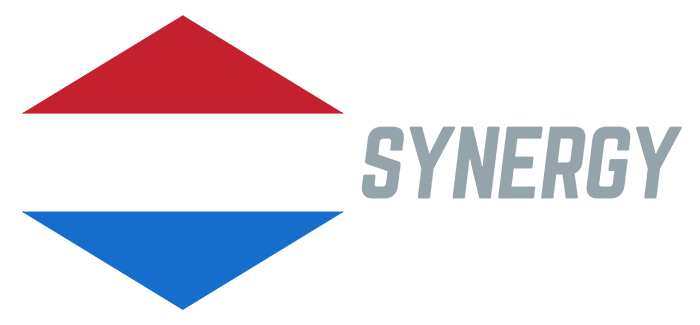
by Josh Seaman | Jun 17, 2022 | Employment Agencies, Healthcare & Medicine, Medical, Recruitment Agencies
The job of a nurse can be challenging. As a result, it presents a variety of both physical and emotional challenges. On the other hand, being a nurse can be incredibly rewarding and beneficial in a variety of ways, making it an excellent long-term career option.
If you are considering becoming a nurse, it is essential to do your research on the work you will be doing. This may help you decide if this is an excellent career path for you. It can also help you build a successful resume that showcases your strengths and experience in the field.
A deep sense of fulfilment can be found in this line of work. Nursing is a rewarding career that offers a variety of rewards, including the chance to see babies take their first breaths and the bonds formed with patients as a result of the work they do. Nurses have the power to leave an imprint on the lives of those they serve that they will never be able to forget.
Below are some of the reasons why being a nurse is a fulfilling career:
Workplaces
As a nurse, you can choose from a wide range of specialities, as well as a variety of workplaces. Hospitals, doctors’ offices, psychiatric facilities, and even in-home care are examples of these. They can work in the public health field, in community health, as a consultant, or even as an instructor.
As a nurse, you will be part of a team providing quality care to patients and families. You may be working with doctors, other nurses, psychologists, physiotherapists, occupational therapists, social workers, nutritionists, pharmacists, radiographers and many others.
You can also work as a nurse overseas. It’s an excellent way to get some further experience in your field. If you work overseas, you’ll have the opportunity to improve your nursing skills as well as learn new ones. You’ll also be able to gain valuable experience that will help you in your career when you return to Australia.
Continuous Learning
When it comes to furthering your nursing career, you have a plethora of options. The list of possible specialities is endless, but it includes emergency, critical care, geriatric, cardiac, and psychiatric medicine, to name just a few. Alternatively, you may discover a passion and stick with it for the rest of your life, or switch gears and try something different. As long as you stick with your nursing education, there is no limit to what you can achieve.
Your Skills and Experience can Help you Improve your Judgement
The skills you gain as a nurse will serve you well in the future. Nurses are better able to assess the gravity of a situation and determine the best course of action when faced with illness or an emergency in the course of their daily work. It is vital to improve your view of life by working as a nurse. It’s possible that a traffic jam won’t seem so bad after dealing with a life-threatening situation or witnessing the birth of a child.
Whether you’re already a nurse or thinking about becoming one, it is essential that know the reasons why being a nurse is a fulfilling career.

by Josh Seaman | Jun 15, 2022 | Employment Agencies, Recruitment Agencies
To be considered for almost any job, you almost always have to submit an application in the form of a letter. As an introduction, it explains why you’re writing, highlights some of your achievements or capabilities, and proposals a chance to talk in person with the prospective employer.
A well-written cover letter can make or break you in the hiring process, so you shouldn’t skimp on attention to detail when crafting it. Think about how effective you are at communicating as well as the accomplishments you’ve listed in it. The content, format, and tone of a cover letter differ depending on the applicant’s position. Try asking for feedback on your letter from at least a few professionals in your field who have gotten jobs or hired people in the past.
Tips
Here are some tips in writing your cover letter:
- Keep your letter to one page at the most. Be clear and concise in your writing.
- Take a look at what the employer is looking for and what you have to offer. You can then use this information to craft a letter that appeals to the employer’s self-interest.
- Make an effort to personalize each cover letter in response to a specific job posting. If possible, show that you have some familiarity with the company to which you’re applying.
- Avoid jargon and write in a clear, mature style. Don’t use long, complex sentences or paragraphs. Confidence, positivity, and enthusiasm should be combined with respect and professionalism when communicating through active verbs and the active voice.
- Prevent hard-sell, generic, or unorthodox letters, but show some personality. Begin quickly and draw attention right away.
- The points should be arranged in a logical order, and each paragraph should focus on a single point.
Questions
Ask yourself the following questions to guide you in writing your cover letter:
- Whom am I addressing it?
- What do I hope to accomplish?
- Whom am I trying to reach, and what are they hoping to accomplish?
- What is the best way to convey my goals in relation to my audience’s needs and objectives?
- Why should my target audience care about what I have to say?
- What is the best way to get my reader’s attention and encourage them to continue reading my piece?
- How can I keep the reader’s interest and desire high enough throughout the letter to keep them engaged?
- What proof can I use to demonstrate my worth to my audience?
- In the case of a letter containing a resume, what is the best way to promote it in the letter itself?
- What is the best way to seal the deal and convince the reader to get in touch with me for more information?
- Is this letter my best work to date in terms of professionalism?
- Has the letter been thoroughly rewritten, revised, and proofread by me?
Format
Follow the following tips to format your cover letter properly:
- Use a word processing software or type each letter individually.
- Make use of high-quality bond paper.
- Always use the employer’s full name and title when communicating with them.
- There should be no grammatical errors, punctuation, or spelling anywhere in the document. In addition, it should be free of mistakes in any way. Ensure that your work is error-free!
- Use a standard business letter format. When in doubt, seek assistance from the Writing Center.
Follow the tips here, and good luck with writing your cover letter!

by Josh Seaman | Jun 10, 2022 | Brand, Employment Agencies, Marketing, Recruitment Agencies
Even if you’re not actively looking for a new job, you should take advantage of every opportunity to demonstrate your value to potential employers. Don’t wait for others to bring attention to you; it’s your job to market your qualifications.
Of course, if you’re constantly blaring your own trumpet, you’ll scare people away. The great news is that you don’t have to be ostentatious in order to promote your skills. While you don’t have to be too loud about your accomplishments, it is essential to let people know that you’re a skilled worker. Be honest and modest in your approach. Explain what you’ve done rather than talk about how great you are. There are many ways to promote yourself without seeming boastful or egocentric. It’s about letting people know about your talents and skills without talking about them constantly or making a big deal out of it.
Below are some ways to increase your marketability to potential employers:
Show-off your Soft Skills
From year to year, the various types of hard skills can change. Soft skills, on the other hand, are always in demand. Soft skills are most often developed through experience, but they can also be learned. You must constantly refine and build your hard skills to remain relevant in the job market. Once you have the basic skills mastered, you can begin working on soft skills. Reading comprehension and mathematics aren’t as important to employers as soft skills like communication and interpersonal skills.
Communication skills are essential soft skills that companies look for when hiring employees. This includes oral communication skills, written communication skills, and nonverbal communication skills. People with these three types of communication skills will stand out from the crowd during an interview, and they’ll be hired sooner than their peers.
Workplaces of all kinds value the ability to work in a group and your ability to solve problems and resolve conflict. Be prepared to share examples of how you’ve used these and other soft skills in the past during a job interview to display that you have them.
Gain Experience in the Management Field
In order to gain management experience, you don’t necessarily need to be a manager. When it comes to leadership, managing an intern pool is an excellent way to get a taste of what it’s like to manage a team.
You can gain valuable skills by managing interns, including dealing with multiple personalities and unique needs, keeping the team motivated and productive, managing tasks effectively, solving problems in a team environment, and developing professional relationships. You can add this management experience to your resume.
Social Media Presence
Social media sites such as Facebook, LinkedIn, Twitter, and others can assist you in establishing your personal brand, showcasing your expertise, and connecting with key opinion leaders in your industry. Recruiters may find you more quickly if you have an active social media presence.
You can easily set up a LinkedIn profile and start using it to increase your visibility in your industry. Do not use your professional profile for personal reasons. In other words, do not write about how you feel sick because of the weather or that you are frustrated with your boss. The same holds true for Twitter, Facebook, and other social media sites; use them to enhance your professional image. Be sure to establish a professional-looking LinkedIn profile.
Join a Professional Organization
It’s not enough to simply join an industry association and pay your dues. To make a lasting impression on potential employers, you must regularly be involved in the organization. For example, if you’d like to be a panellist at a conference, volunteer to be the person who brings in the experts. Getting involved in a professional organization is also an excellent way to meet people and build your network. The people you’ll be working with are the ones you make connections with.
It is possible to land your dream job if you know how to market yourself to potential employers effectively. Follow our tips, and good luck!

by Josh Seaman | Jun 8, 2022 | Employment Agencies, HR & Recruitment, Recruitment Agencies
In order to ensure that an organization hires only qualified and trustworthy candidates, pre-employment background checks are essential. Most large companies and government agencies rely on employment background checks to verify the accuracy of candidates’ resumes. These checks provide a reliable view of an applicant’s past, such as employment history, educational background, criminal records, or military service.
In addition to verifying credentials, employment background checks can reveal financial information, such as lawsuits, bankruptcies, liens, judgments, or previous work-related injuries. Some employers may not perform thorough background checks, putting them at risk of hiring a potential thief or other criminals.
It’s a lengthy process that includes many steps. A prospective employer can request a background check during the interview process, which applicants sign authorizing employers or third-party service providers to look into specific areas of their life.
Below are some of the facts that Employers or third-party service providers look at:
Work Experience/Employment Verification
With your permission, your future employer may contact your previous employers. Verifying your employment dates and positions will be done by contacting the companies listed on your resume or application. Additionally, reference people you’ve provided can be contacted to verify your performance and character, if necessary.
Certificates and Licenses
In the same way that employers verify your previous employment, educational or licensing institutions will be contacted by your prospective employers to confirm your academic and licensing credentials. Upon request, your future employer will check on the status of any professional licenses you may have to make sure they are all accurate.
In most cases, educational background verification verifies an individual’s certifications obtained directly from schools or universities, such as dates of attendance, major, degree courses attained, and degree completion.
Criminal Record/History
These background checks have become increasingly popular over the years as more lawsuits claim that employers were negligent in hiring or retaining employees who had engaged in acts of workplace violence or had damaged property. Criminal history background checks typically include searches of local, state, and national databases, as well as federal courts, to determine whether an applicant or employee has been convicted of any criminal offences, such as felonies or misdemeanours.
Drug Use
If your future employer asks for a drug test, you’ll go to a collection centre (a clinic or a laboratory) and submit a specimen such as urine. Your future employer predetermines this lab’s drug testing. Providing proof of a doctor’s prescription is not required when discussing a medication you were prescribed, but you should be prepared to provide your medical history if pressed.
Records Relating to Automobiles
As long as your job requires you to get behind the wheel, your future employer will likely conduct a background check on your driving record. If you want to be covered while riding around in one of their cars, you’ll need this. This report will include information on driving violations, suspensions, and felony and misdemeanour convictions for driving under influence. Understandably, you may feel like you’re in a dilemma during your background check. However, if you have the correct information, you can be confident that the information you obtain is exact, honest, and in your best interests. Good luck!

by Josh Seaman | Jun 3, 2022 | Employment Agencies, Recruitment Agencies, Sales, Sales & Account Management
Many qualities make an excellent salesperson, but some of the most important include building solid relationships with clients, having a good understanding of the products or services being sold, and being able to think on your feet. Additionally, a successful salesperson is typically outgoing and persuasive and can stay motivated even when facing rejection.
If you’re good at sales, you can make much money. A unique aspect of sales compared to other professions is that even after spending years honing your skills in the classroom, you may be unable to close a single deal once you hit the field. Being educated is important, but having the right personality traits is even more crucial.
A successful salesperson must have a strong desire to succeed and be passionate about what they do. Salespeople will fail if they don’t have it.
Below are the top qualities that make a great salesperson:
Communication Skills
In sales, you’re basically communicating all day long. When you’re selling something, you need to know how to engage with the people you’re trying to reach in a variety of ways. Make sure you know how to communicate your thoughts and ideas in a way that everyone can fully comprehend, and you’ll have a better chance of winning over a new customer.
When you’re in sales, you’re also in charge of making sure that your company has a decent relationship with its customers. That means you have to understand how to keep them happy and encourage them to return. To do this, you’ll need to learn the different ways that each customer buys. One person might want to email you a request for more information, while another will pick up the phone.
Dedication
Most sales involve more than one encounter with a customer. If you want a customer to buy your product or service, you may have to meet with them several times over the course of a few days, weeks, or months. It is relatively uncommon for an excellent salesperson to give up on their end goal or lose focus during the course of their sales campaign. If they are serious about serving a client, they must be willing to go to any lengths to get there.
Being dedicated as a salesperson has the ability to pay attention to all the little things that can be a massive asset in sales. You need to see things from your customer’s perspective and notice how they react to what you’re saying. Those types of insights will help you get more out of each sales call and close more deals.
Patience
Patience is just as important as a strong work ethic when it comes to sales. When trying to sell a product or service, it may require some time to persuade a customer to buy. Too much pressure or the need for immediate feedback will cause many people to retreat. People who are good at selling will be able to pick up on this type of buyer and provide them with the space and time they require to make a final choice.
Putting yourself in your Customers Shoe
The best way to sell something to a customer is to connect with them on a personal level. It will be much easier to persuade them that they require your product or service if you have a thorough understanding of their requirements. Maintaining long-term relationships with your customers is just as important as making a quick buck. Your customers will continue to purchase from you as long as they receive value in exchange for their money.
Having these qualities can be difficult and doesn’t just happen overnight, as selling is not always pleasant. After all, excellent salespeople have to convince their customers that they require something from them.
Things could get awkward if you are new to it. But don’t worry! There are ways to make the process easier.

by Josh Seaman | Jun 1, 2022 | Employment Agencies, HR & Recruitment, Recruitment Agencies
The best way to find new employees is through excellent marketing techniques. You can attract the best and the brightest candidates by advertising your company and its openings in the right places. Human resources professionals must be creative in today’s candidate-driven job market if they want to draw in the best candidates.
To help with this, recruitment marketing is often used. It is HR’s newest weapon in the battle for talent. You can make prospects excited about your firm and ready to apply for your vacant jobs by using marketing techniques in recruitment.
Recruitment marketing may help your organisation stand out from the competition. Using established marketing techniques, you can grab the attention of job seekers and encourage them to apply for vacant opportunities.
Below are some of the excellent marketing techniques for recruitment that you can use:
Broaden your Materials
Finding fascinating and informative materials is a great strategy to attract the right people to your company. Each stage of the candidate’s journey requires a distinct sort of recruiting material. Here are some materials that you may utilise: Blogs, Emails, Newsletters, Videos, Webinars, White papers, case studies and eBooks, Infographics, diagrams, flowcharts & graphs, Checklists, Minigames and competitions.
Improve the Quality of your Career Website
For a firm to have an effective career website, it has to be clear about its mission, values, and workplace environment. Also, it makes it easier for prospective employees to view your available opportunities and submit an application. It is advisable to publish photos of your office and highlight the benefits and perks of your employees and future employees.
Utilise Social Media
The usage of social media in recruitment marketing is also a common strategy. Starting with a social media recruiting plan is the best place to begin. Find exceptional applicants and promote your recruiting material by using social media. In order to achieve this, you can make use of different social media channels such as Facebook, LinkedIn, Twitter, Instagram, Etc. Post about your job offers on these sites and get them viral.
When using social media for recruitment marketing, it is vital to keep in mind that your content should be genuine. You should ensure that the videos, images, and other information you share are appropriate.
Promote a Pro-worker Stance
Inspire your workers to spread the word about your company’s reputation as an employer of choice. Make a video, or ask them to write an essay about their experience working at your firm for your business’s career website. You can also request them to snap pictures of their workday and post them on social media.
Test Results and Effectiveness
Measure your recruiting marketing efforts. Start testing to discover what works best after you’ve identified weak points. For example, A/B testing may be used to evaluate various landing pages, job advertisements, and calls to action. Test the order in which different elements are included in your message, and try including or removing images or video. Monitor how users respond to your changes by conducting analytics tests on a regular basis.
When testing, don’t just compare two results. Evaluate the results of each marketing effort with your overall goal in mind. Compare campaign results to your overall recruiting performance, not simply the other campaigns. An interesting development is that one test was successful, but it performed even better when used in conjunction with another strategy.
Now that you know some of the excellent marketing tips for your recruitment utilise them properly!







Recent Comments